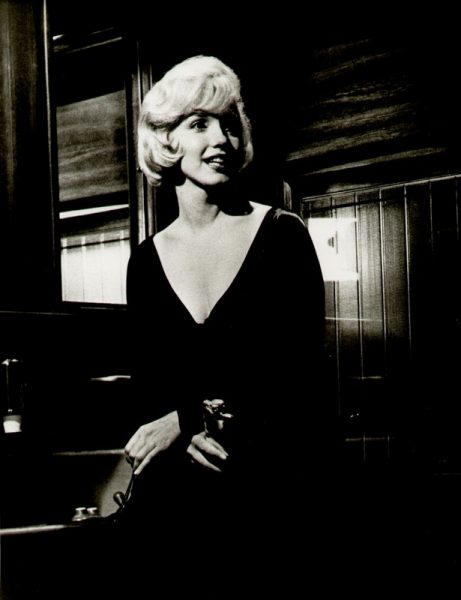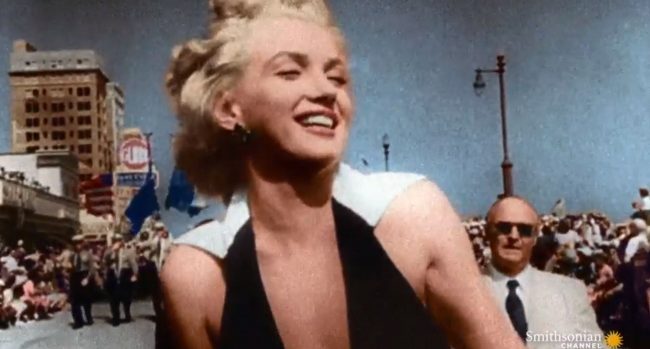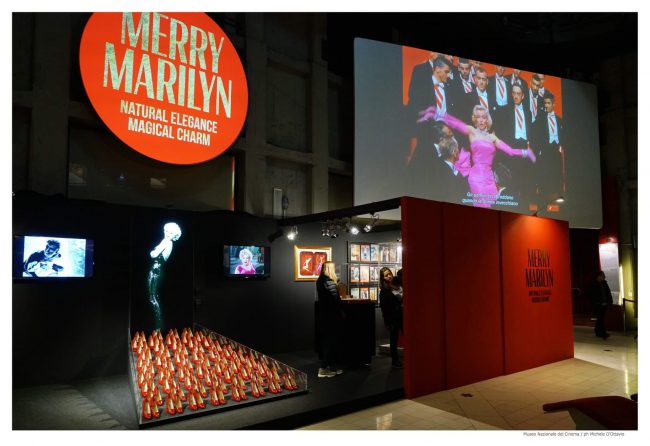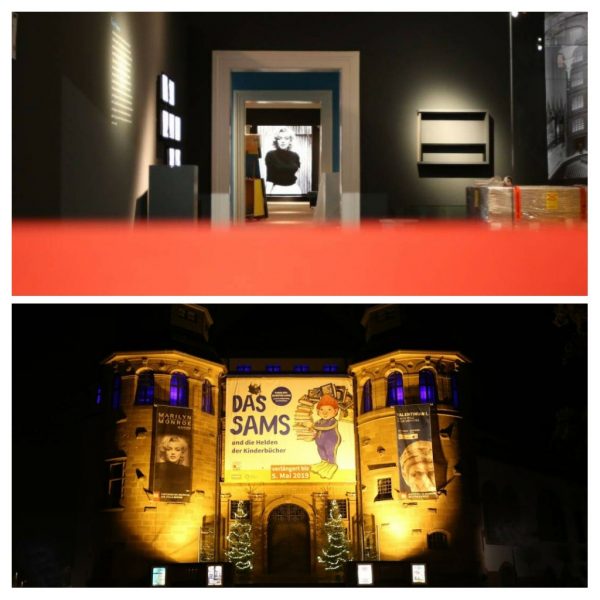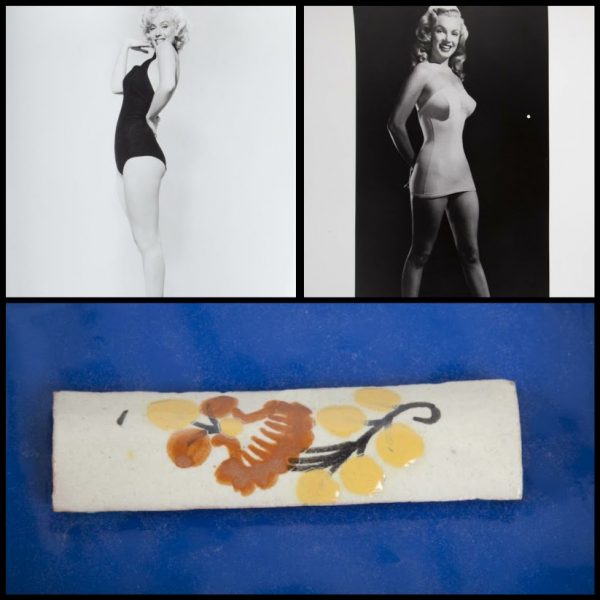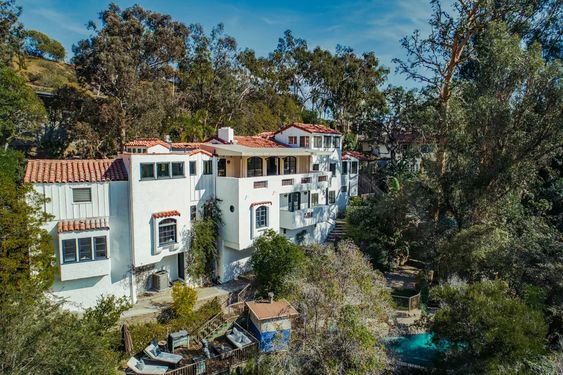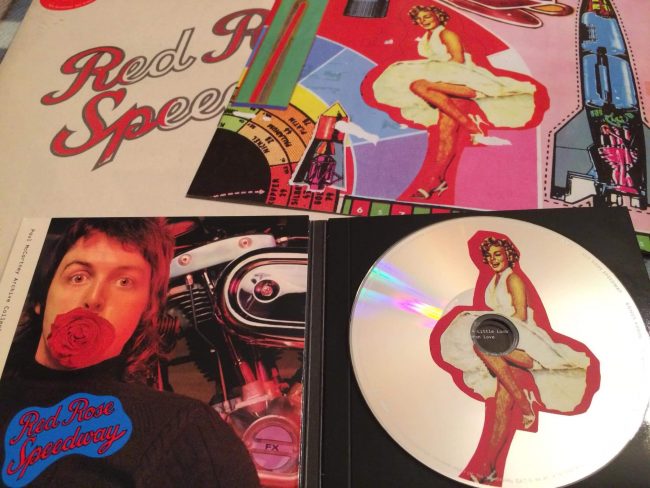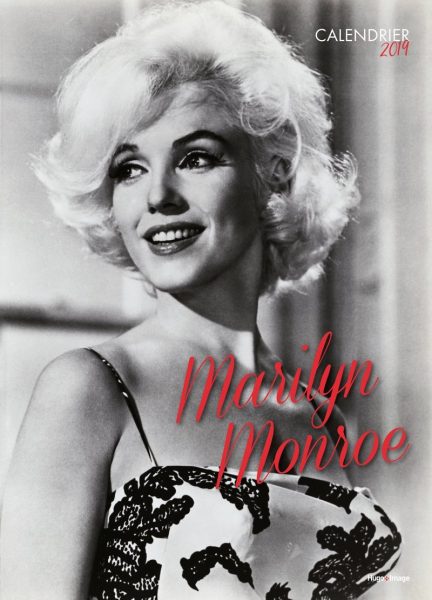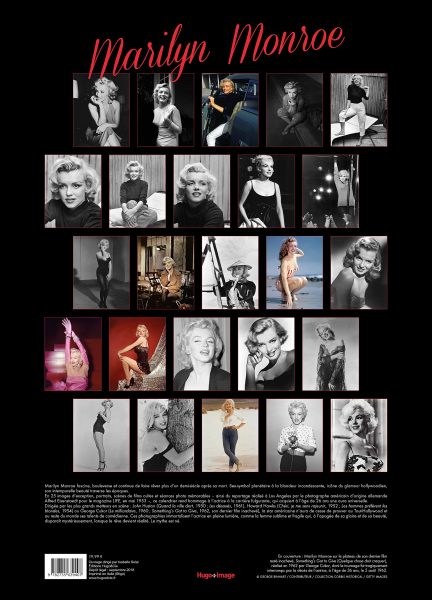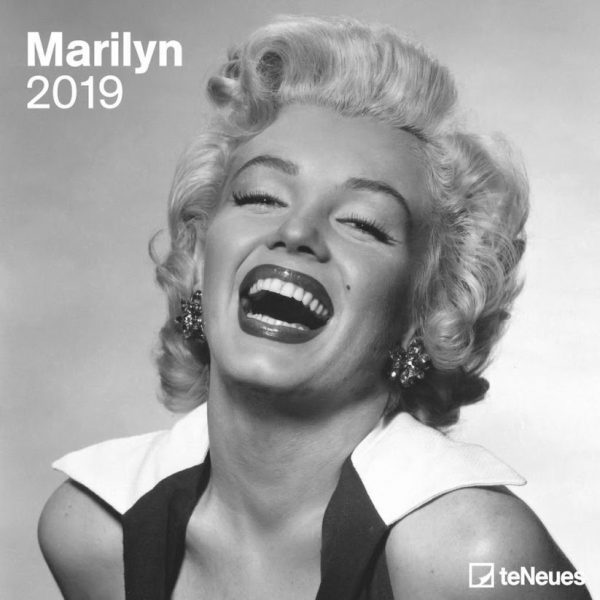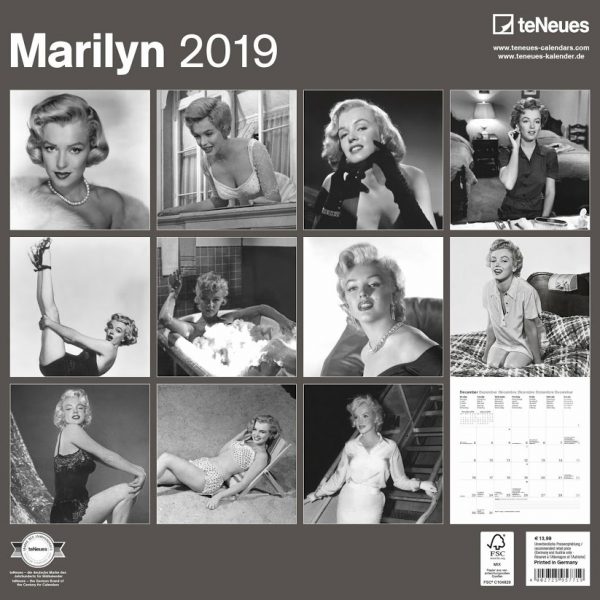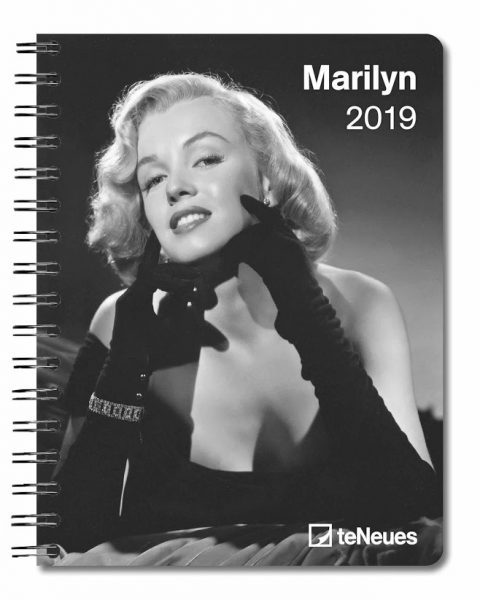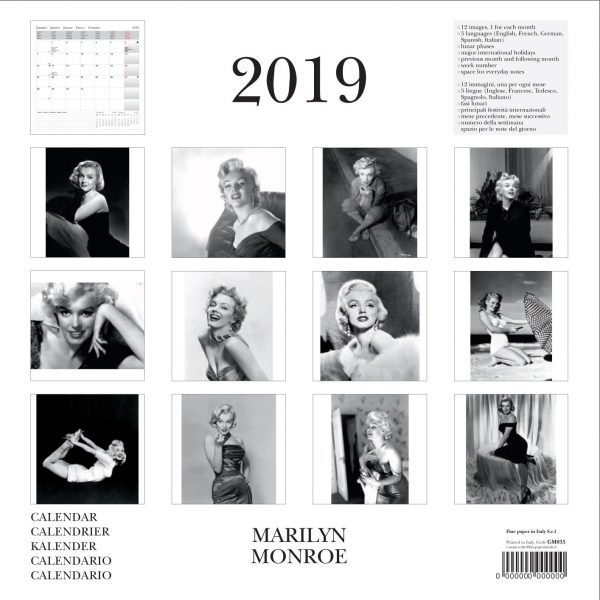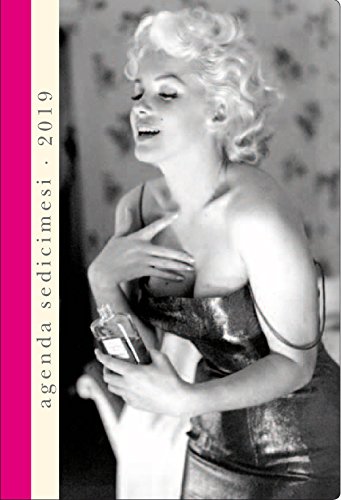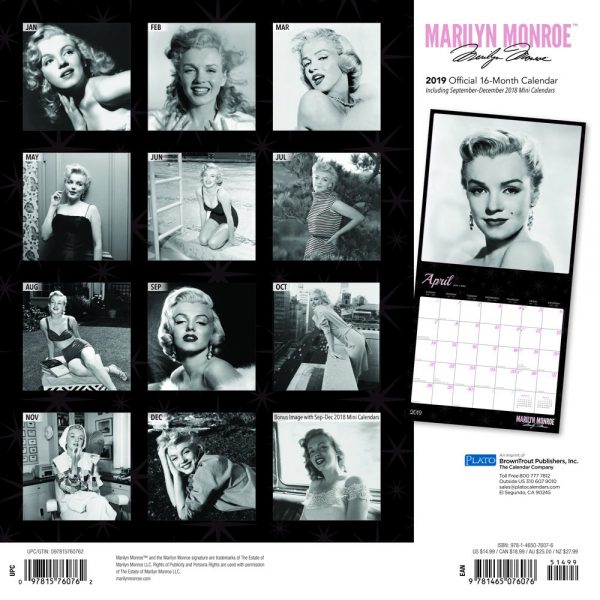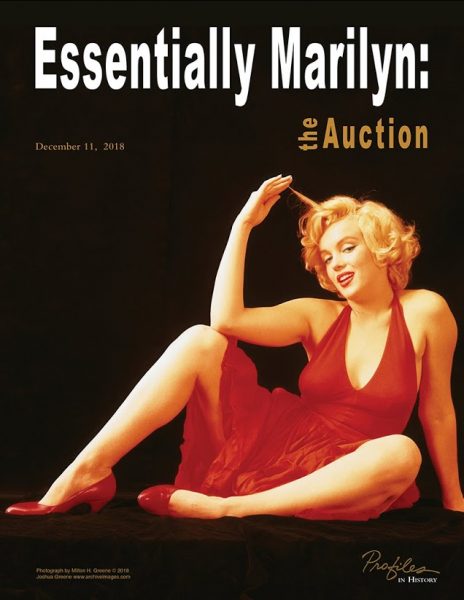
The most surprising aspect of last week’s Essentially Marilyn auction at Profiles in History was how many valuable items from the Maite Minguez-Ricart collection and others (including movie costumes) went unsold, while others only reached the lower estimate. In a post for his MM Collection blog, Scott Fortner goes as far as to call it a flop – and noting the high prices reached at Julien’s only last month, he argues that poor organisation was to blame, rather than a lack of interest. Here’s a selection of items that sold well, and others that didn’t: you can find the full list over at iCollector.
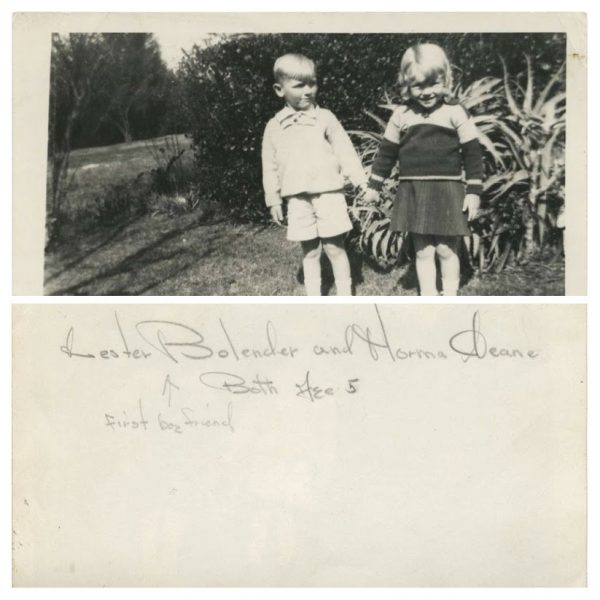
Photo of Norma Jeane aged five, with her ‘first boyfriend’, Lester Bolender ($10,000)
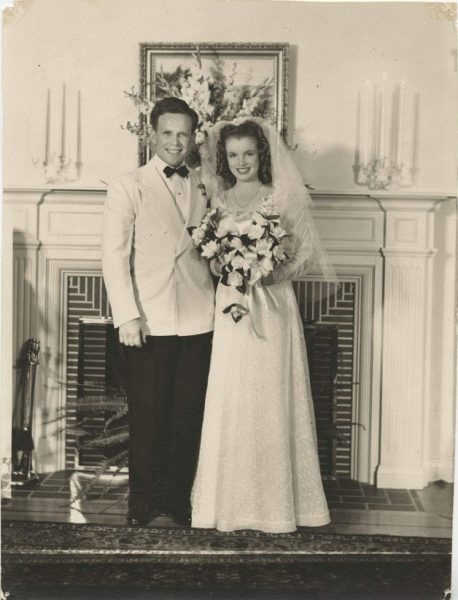
Wedding photo of Norma Jeane and Jim Dougherty ($15,000)
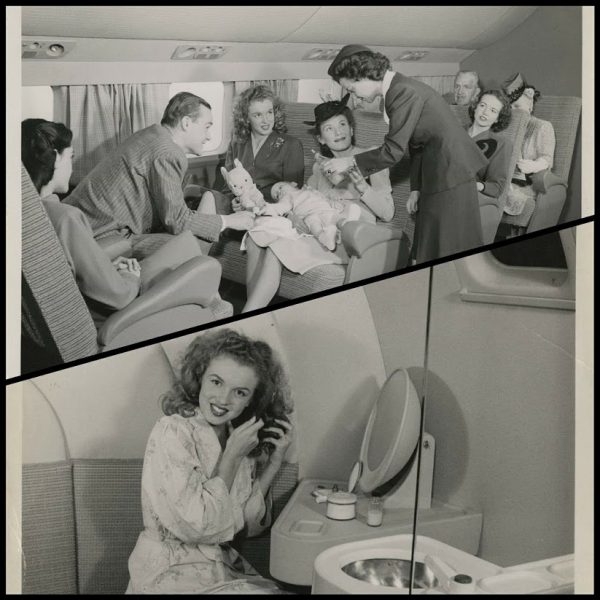
Seven photos from Norma Jeane’s first assignments with the Blue Book Modelling Agency, 1945 ($11,000)
Marilyn’s personally inscribed photo with Ben Lyon ($37,500 – more info here)
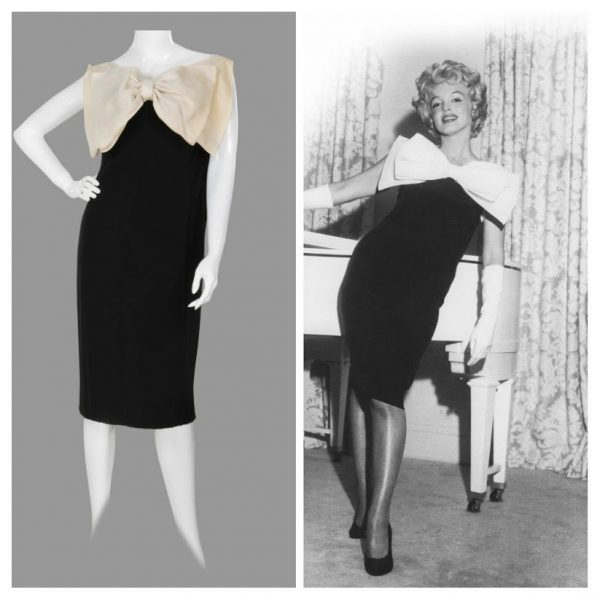
Black silk cocktail dress with oversize white bow, designed by John Moore and worn by Marilyn in 1958 ($40,000)
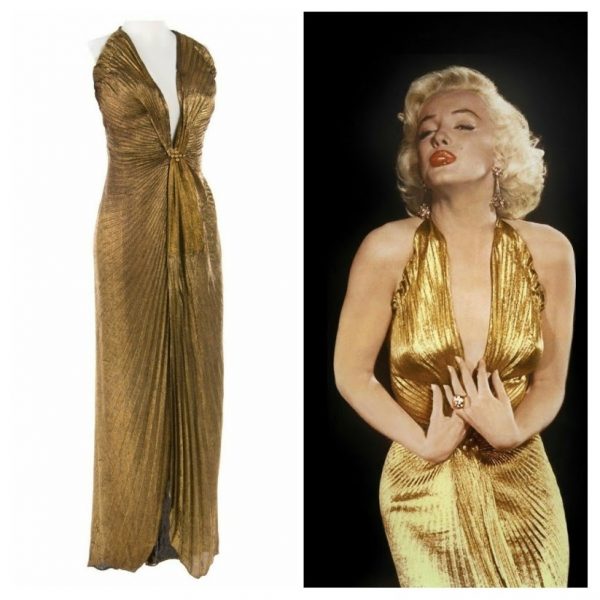
Gold pleated halter gown designed by Travilla for Gentlemen Prefer Blondes ($100,000)

Crème-coloured gown by Travilla for How to Marry a Millionaire ($100,000)
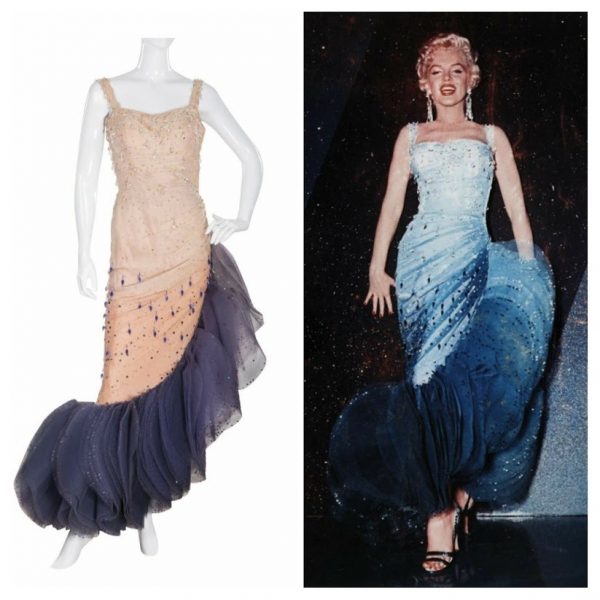
Crème and blue gown by Travilla for There’s No Business Like Show Business ($70,000)
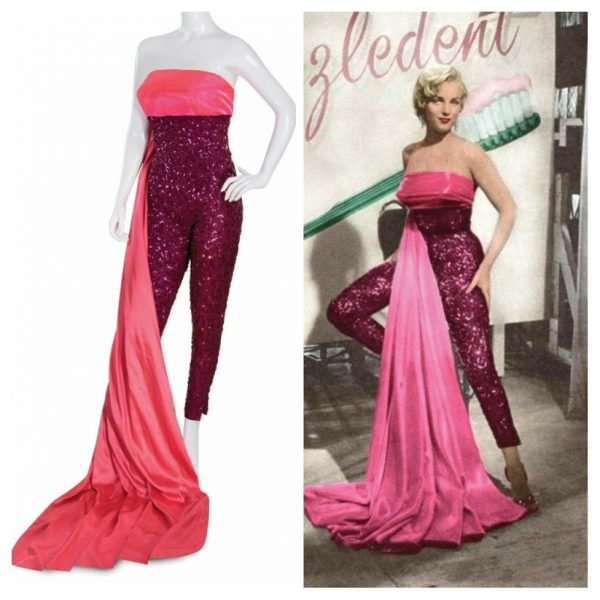
Pink and purple satin pantsuit with train, designed by Charles LeMaire for The Seven Year Itch ($100,000)
Silver cigarette box inscribed by Marilyn to Billy Wilder, 1954 ($10,000)

Sheer tan dress by JAX, worn by Marilyn in 1958 ($20,000)
Patterned wool overcoat, worn by Marilyn in 1961 ($30,000)
Marilyn’s personal key to Warner Brothers, 1956 ($10,000)
Red halter dress by JAX, worn by Marilyn in her final photo session with Milton Greene, 1957 ($100,000)
Certificate of nomination from the Golden Globe Awards for Some Like It Hot, 1959 ($10,000)
Black address book ca 1960-62 ($17,000)

John Bryson’s candid photo of Marilyn and Arthur Miller on the set of Let’s Make Love, signed by both ($8,00)
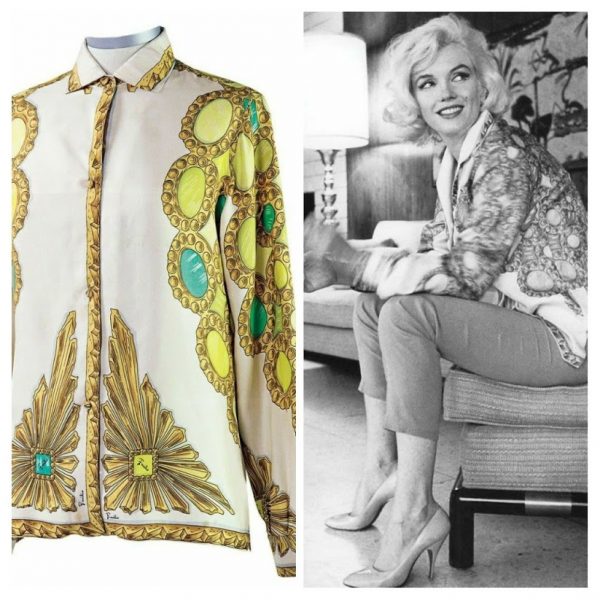
Pucci silk blouse, worn by Marilyn in 1962 ($95,000)

White Ferragamo pumps, worn by Marilyn in Something’s Got to Give ($16,000)
Marilyn’s original grave marker from Westwood Memorial Park ($38,400)
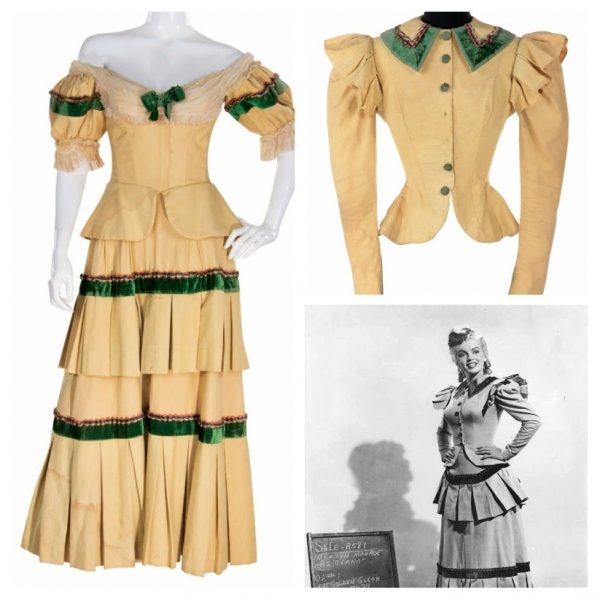
Period costume by Rene Hubert for A Ticket to Tomahawk (UNSOLD)
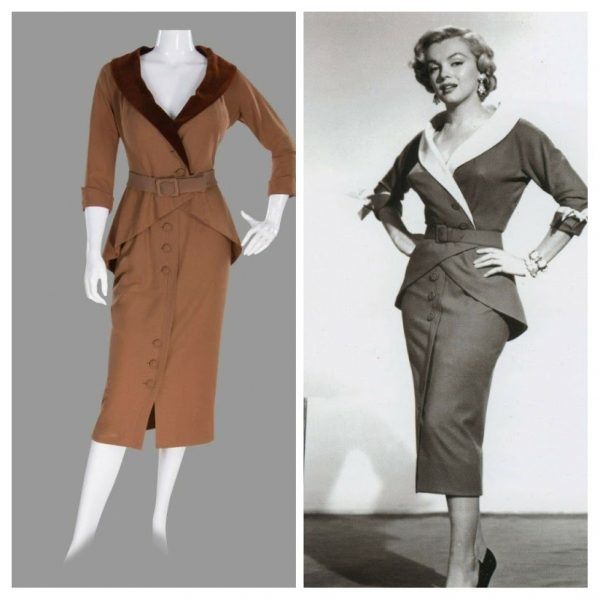
Brown Skirt Suit by Charles LeMaire for Love Nest (UNSOLD)

Costume sketches by Eloise Jenssen for We’re Not Married (UNSOLD)
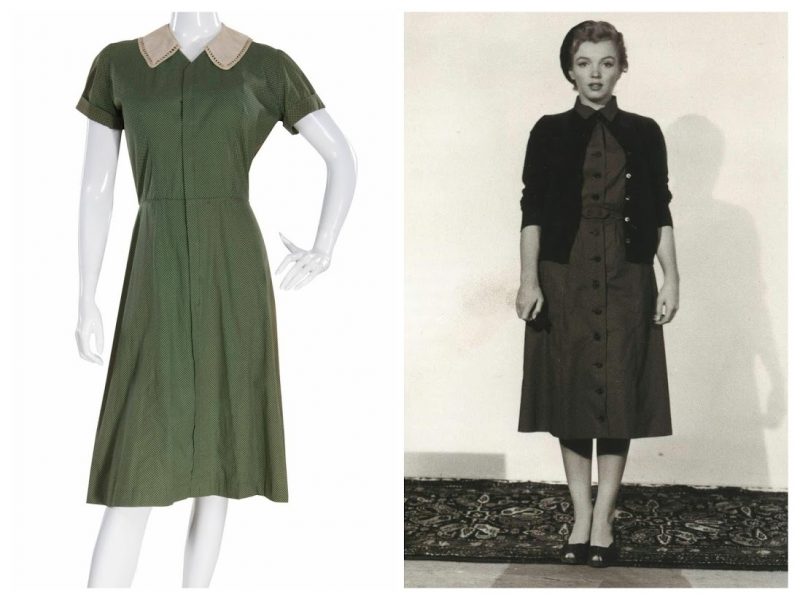
Green dress by Travilla for Don’t Bother to Knock (UNSOLD)
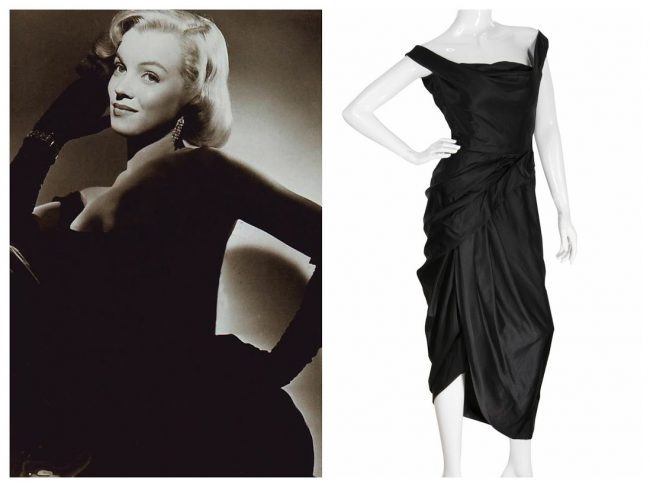
Marilyn’s personally owned Ceil Chapman dress (UNSOLD)
Unreleased studio master for ‘Down Boy’ (UNSOLD – more info here)

Showgirl costume by Travilla for Gentlemen Prefer Blondes (UNSOLD)
Charles Feldman’s archive regarding The Seven Year Itch (UNSOLD)
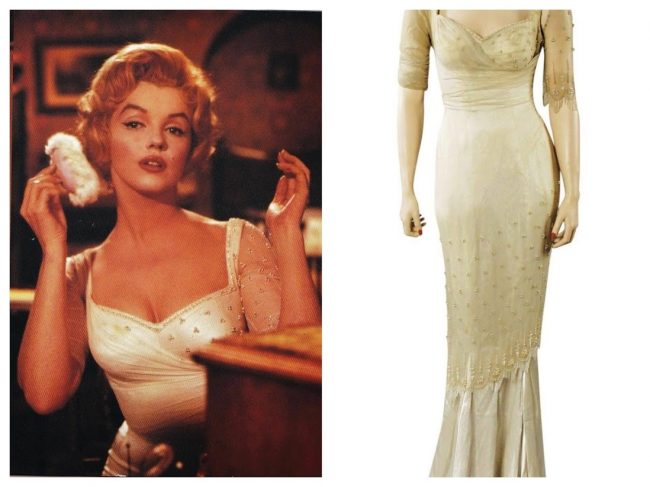
Pearl encrusted gown, one of several copies made for The Prince and the Showgirl (UNSOLD)
Two address books, ca. 1950s-60s (UNSOLD)
Various exhibition prints by Milton Greene (UNSOLD)
